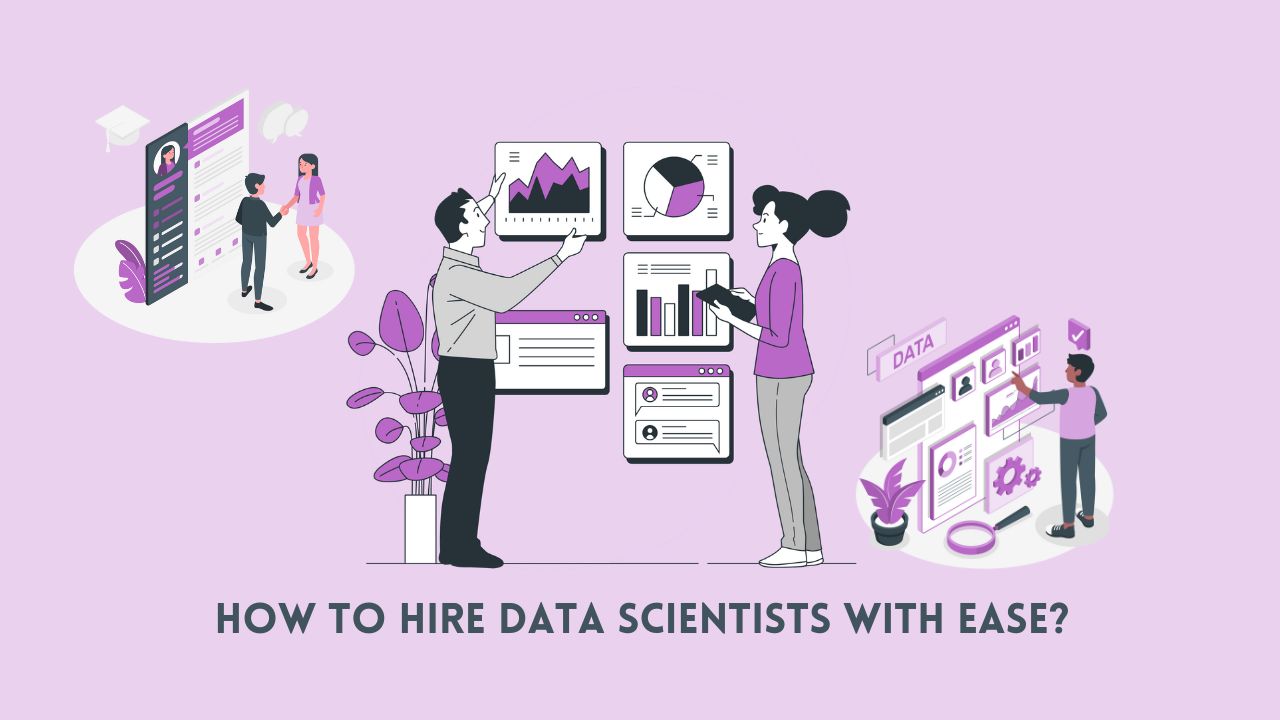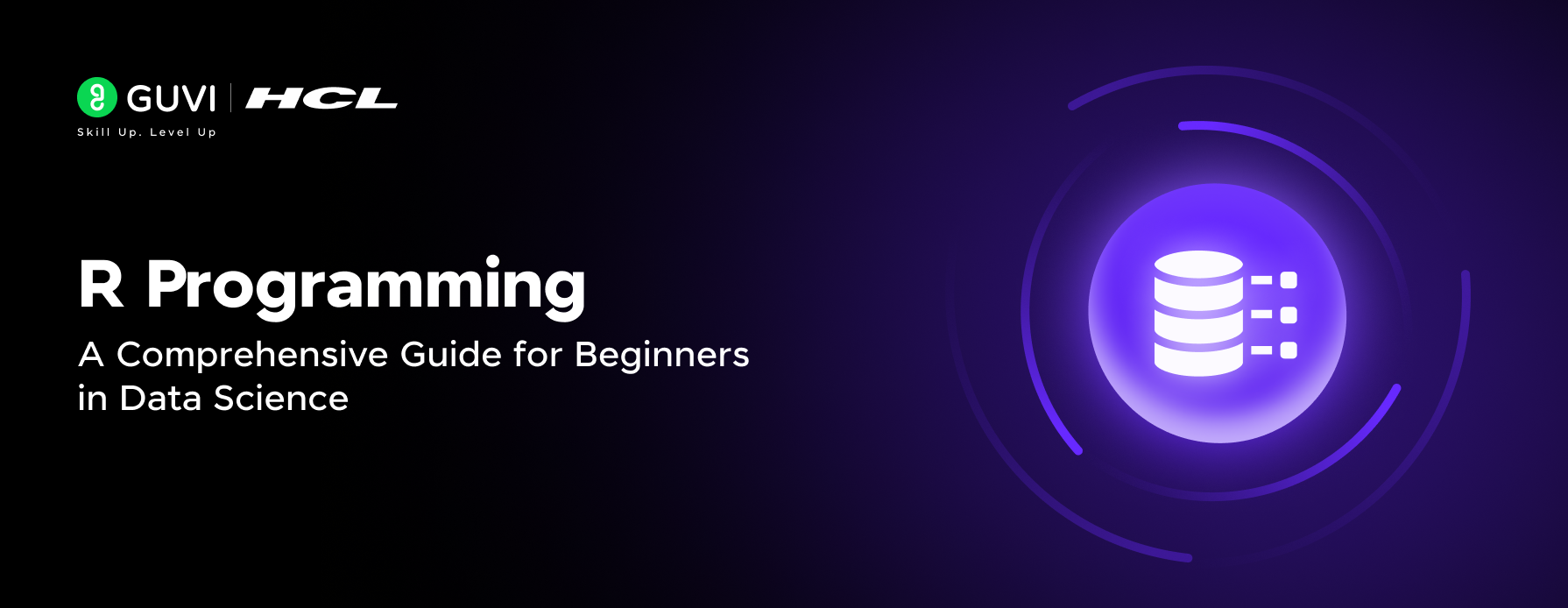
What is Hypothesis Testing in Data Science?
Mar 20, 2025 6 Min Read 4843 Views
(Last Updated)
In an era where data is king, understanding and leveraging statistical methods to decipher trends and predict outcomes has become crucial.
Hypothesis testing in data science stands at the forefront of these methods, providing a systematic way to test assumptions about a data set. This foundational technique not only helps in making informed decisions but also in validating the results that data scientists work tirelessly to achieve.
As we delve into the topic, you’ll learn about the intricacies of hypothesis testing including its definition, differentiation from hypothesis generation, the various types of hypothesis testing, and how these tests are calculated. By the end of this article, you’ll have a solid understanding of hypothesis testing in data science, ready to apply this knowledge in practical, real-world situations.
Table of contents
- What is Hypothesis Testing?
- Definition
- How is Hypothesis Testing Used in Data Science?
- When to Use Hypothesis Testing in Data Science?
- Examples and Applications
- Types of Hypothesis
- Null Hypothesis
- Alternative Hypothesis
- Non-directional Hypothesis
- Directional Hypothesis
- Statistical Hypothesis
- How to Calculate Hypothesis Testing?
- Step 1: Formulating Hypotheses: Define Null and Alternative Hypothesis
- Step 2: Choose the Significance Level
- Step 3: Collect and Analyze Data
- Step 4: Calculate Test Statistic
- Step 5: Comparing Test Statistic
- Step 7: Interpret the Results
- Must-Know Terminology for Hypothesis Testing
- Parameter
- Statistic
- Sampling Distribution
- Standard Error
- Type-I Error
- Type-II Error
- The Level of Significance
- P-value
- Final Thoughts...
- FAQs
- What is hypothesis testing in simple words?
- How is hypothesis testing used in machine learning?
- What is the application of hypothesis testing in data science?
- Why is hypothesis testing important?
What is Hypothesis Testing?
Hypothesis testing is a fundamental statistical procedure used to determine whether there is enough evidence in a sample of data to infer a particular condition about a population. This method is crucial in data science for validating theories and models about data behaviors.

Definition
At its core, hypothesis testing involves two contrasting hypotheses: the null hypothesis, which states that there is no effect or no difference, and the alternative hypothesis, which is what you aim to prove.
Through hypothesis testing, you can determine whether the observed data deviates significantly from the null hypothesis and thereby support the alternative hypothesis.
How is Hypothesis Testing Used in Data Science?
In data science, hypothesis testing is employed to make decisions and predictions based on data analysis.
For instance, it helps in determining whether a new drug is more effective than the current standard, or if changes in a website’s layout lead to more conversions.
It’s used to compare the means of two data groups, test proportions in categorical data, or determine the correlation between variables.
When to Use Hypothesis Testing in Data Science?
You should use hypothesis testing when making assertions about a data population based on sample data. This is particularly useful in scenarios such as:
- Comparing a single group against a pre-established standard.
- Assessing the differences between two or more groups.
Hypothesis testing can be divided into parametric and non-parametric tests.
- Parametric tests assume a normal distribution of the data, such as testing if the average height of a group differs from a specific value.
- Non-parametric tests, on the other hand, do not assume a normal distribution and are useful when data does not fit this criterion, such as the distribution of income in different demographic groups.
Table: Types of Hypothesis Tests and Their Applications
| Type of Test | Description | Common Use Cases |
|---|---|---|
| Parametric | Assumes data follows a normal distribution. | Comparing means, testing correlations. |
| Non-parametric | Does not assume a normal distribution. | Data with skewed distributions, ordinal data. |
Examples and Applications
Consider the following examples to understand the application of hypothesis testing in real-world scenarios:
- Hypothesis 1: Testing if the average order value has increased since the last financial year using a one-sample parametric test.
- Hypothesis 2: Comparing investment returns between two stocks using a two-sample parametric test.
- Hypothesis 3: Evaluating if a new user interface leads to a higher conversion rate than the expected 30%, using a one-sample non-parametric test.
These examples illustrate how hypothesis testing facilitates informed decision-making in various business and research contexts.
By understanding and applying hypothesis testing effectively, you can enhance your ability to make data-driven decisions in the field of data science.
Before we move into the next section, ensure you have a good grip on data science essentials like Python, MongoDB, Pandas, NumPy, Tableau & PowerBI Data Methods. If you are looking for a detailed course on Data Science, you can join GUVI’s Data Science Course with Placement Assistance. You’ll also learn about the trending tools and technologies and work on some real-time projects.
Additionally, if you would like to explore Python through a Self-paced course, try GUVI’s Python course.
Types of Hypothesis
1. Null Hypothesis
The null hypothesis, denoted as H0, proposes no statistical significance or effect between the variables under study. It serves as the default position in hypothesis testing, suggesting that any observed differences are due to chance.
For example, if you’re testing the effectiveness of a new teaching method, the null hypothesis would state that this method does not affect a student’s performance compared to the conventional approach.
2. Alternative Hypothesis
Contrary to the null hypothesis, the alternative hypothesis, denoted as Ha or H1, asserts that there is a significant effect or relationship between the variables.

It is what researchers aim to prove through their data analysis. For instance, in the context of the teaching method example, the alternative hypothesis would suggest that the new method does significantly improve student performance.
3. Non-directional Hypothesis
A non-directional hypothesis does not specify the direction of the expected effect or relationship. It simply predicts that there will be a difference or relationship, without stating whether it will be positive or negative.
This type of hypothesis is suitable when the direction of the outcome is not known beforehand, allowing for an open-ended exploration of the data.
4. Directional Hypothesis
In contrast, a directional hypothesis specifies the expected direction of the relationship or effect between variables. It might predict, for example, that one group will score higher or lower than another based on some intervention.

This hypothesis is used when prior research or theory suggests a particular outcome direction.
5. Statistical Hypothesis
Statistical hypotheses are used to make inferences about a population based on sample data. These include both the null and alternative hypotheses.
Statistical hypothesis testing involves calculating the probability of observing the sample data if the null hypothesis is true. This process helps in deciding whether to accept or reject the null hypothesis based on the evidence provided by the data.
Table: Overview of Hypothesis Types
| Type of Hypothesis | Description | Example Scenario |
|---|---|---|
| Null (H0) | Suggests no effect or difference exists. | No difference in test scores between two study groups. |
| Alternative (Ha or H1) | Suggests a significant effect or difference exists. | New teaching method improves test scores. |
| Non-directional | Predicts a relationship without specifying direction. | There is a difference in outcomes, direction unknown. |
| Directional | Specifies the expected direction of the relationship. | One group will score higher than another. |
| Statistical | Used in formal testing to make inferences about populations. | Testing if a drug is more effective than a placebo. |
By understanding these types, you can better design your research and analysis to answer specific questions and achieve clearer, more definitive conclusions.
How to Calculate Hypothesis Testing?
Hypothesis testing is a structured process used to determine whether a hypothesis about a population parameter is supported by the data collected. Here’s a step-by-step breakdown of how you can calculate hypothesis testing in your data science projects:
Step 1: Formulating Hypotheses: Define Null and Alternative Hypothesis
First, state the null hypothesis (H0), which typically proposes no effect or no difference, and the alternative hypothesis (H1), which suggests an effect or difference.
For example, if you are testing a new teaching method, H0 might state that the method has no impact on student performance, while H1 would suggest it does.
Step 2: Choose the Significance Level
Select a significance level (α), usually set at 0.05, which defines the threshold for rejecting the null hypothesis. This level indicates the probability of rejecting the null hypothesis when it is actually true, controlling the risk of a Type I error.
Step 3: Collect and Analyze Data
Gather relevant data through observation or experimentation. Analyze this data using appropriate statistical tests to calculate a test statistic, which will help in comparing the gathered data against the null hypothesis.
Step 4: Calculate Test Statistic
Depending on your data type and hypothesis, choose the correct test statistic. Common tests include:
- Z-test: Used when population means and standard deviations are known.
- T-test: Suitable for smaller sample sizes or when population standard deviations are unknown.
- Chi-square test: Ideal for categorical data or testing independence in contingency tables.
- F-test: Used in the analysis of variance (ANOVA) to compare variances across multiple groups.
Step 5: Comparing Test Statistic
Decide whether to accept or reject the null hypothesis using one of the following methods:
- Method A: Using Critical Values: If your test statistic exceeds the critical value, you reject the null hypothesis. If it does not, you fail to reject the null hypothesis.
- Method B: Using P-values: If the p-value is less than or equal to the significance level, reject the null hypothesis. If it is greater, fail to reject it.
Table: Summary of Test Statistics and Their Usage
| Test Type | Condition of Use | Test Statistic Calculation |
|---|---|---|
| Z-test | Known population mean and standard deviation | Z = (X̄ – μ) / (σ/√n) |
| T-test | Unknown σ and small n | t = (X̄ – μ) / (s/√n) |
| Chi-square | Categorical data | χ² = Σ [(O-E)²/E] |
| F-test | Comparing variances of groups | F = (Variance between groups) / (Variance within groups) |
Step 7: Interpret the Results
Finally, compare the test statistic to a critical value or use the p-value to make a decision about the hypothesis.
If the test statistic exceeds the critical value or if the p-value is less than the significance level, reject the null hypothesis.
Otherwise, you fail to reject it, suggesting that more evidence is needed to support the alternative hypothesis.
Table: Decision Making in Hypothesis Testing
| Decision Criteria | Action Taken |
|---|---|
| Test Statistic > Critical Value | Reject H0 |
| P-value < Significance Level (α) | Reject H0 |
| Otherwise | Fail to reject H0 |
By following these steps, you can systematically assess the validity of hypotheses in your data science projects, ensuring that your conclusions are backed by rigorous statistical evidence.
Must-Know Terminology for Hypothesis Testing
Let us understand some of the basic terminologies data scientists know about hypothesis testing:
1. Parameter
A parameter in statistics is a fixed value that describes a characteristic of a population. For example, the mean income of an entire country is a parameter because it is a property of the population.
2. Statistic
A statistic, on the other hand, is a value that describes a characteristic of a sample, which is a subset of the population.
It is used to estimate the corresponding parameter. For instance, the average income of a sample of individuals from a city would be a statistic used to estimate the population parameter.
3. Sampling Distribution
The sampling distribution is a probability distribution of a statistic obtained through repeated sampling from a population. It helps you understand how the statistic varies and allows for the calculation of probabilities, enhancing the reliability of inferences made from samples.

4. Standard Error
Standard error measures the variability of a sample statistic from the population parameter. It is calculated as the standard deviation of the sampling distribution and is crucial for constructing confidence intervals and conducting hypothesis tests.
5. Type-I Error
A Type-I error occurs when the null hypothesis is incorrectly rejected when it is actually true. This error is also known as a “false positive” and is directly related to the significance level (alpha, α), which you set prior to testing.
6. Type-II Error
Conversely, a Type-II error happens when the null hypothesis is not rejected when it should be, meaning it is false but is incorrectly accepted. This “false negative” error is inversely related to the test’s power, which reflects the test’s ability to correctly reject a false null hypothesis.

7. The Level of Significance
The level of significance (denoted as alpha, α) is the threshold probability for rejecting the null hypothesis. It defines the likelihood of observing the sample data if the null hypothesis is true. Commonly set at 0.05, it represents a 5% risk of committing a Type-I error.
8. P-value
The p-value quantifies the probability of obtaining a test statistic at least as extreme as the one observed, under the assumption that the null hypothesis is correct. A p-value lower than the significance level indicates strong evidence against the null hypothesis, leading to its rejection.
Table: Key Hypothesis Testing Terms and Definitions
| Term | Definition |
|---|---|
| Parameter | A fixed value describing a population characteristic. |
| Statistic | A value describing a sample characteristic, used to estimate the population parameter. |
| Sampling Distribution | Probability distribution of a statistic obtained from repeated sampling. |
| Standard Error | Measures the variability of a sample statistic from the population parameter. |
| Type-I Error | False positive; incorrect rejection of a true null hypothesis. |
| Type-II Error | False negative; failure to reject a false null hypothesis. |
| Level of Significance | Probability threshold for rejecting the null hypothesis. |
| P-value | Probability of observing the test statistic, assuming the null hypothesis is true. |
By familiarizing yourself with these terms, you enhance your understanding of hypothesis testing, allowing for more accurate and reliable data analysis in your projects.
Kickstart your Data Science journey by enrolling in GUVI’s Data Science Course where you will master technologies like MongoDB, Tableau, PowerBI, Pandas, etc., and build interesting real-life projects.
Alternatively, if you would like to explore Python through a Self-paced course, try GUVI’s Python course.
Final Thoughts…
From defining hypothesis testing and distinguishing it from hypothesis generation to delving into the calculation methods and practical applications, each section was aimed at providing a thorough understanding of the topic.
This synthesis of theory and practicality underscores the essence of hypothesis testing in the field of data science—a tool not just for validating theories but also as a bridge between theoretical assumptions and actionable insights.
As readers move forward, it’s crucial to remember the significance of applying these concepts thoughtfully within their projects.
FAQs
Hypothesis testing is a statistical method used to decide if there is enough evidence to support a specific belief or hypothesis about a dataset.
In machine learning, hypothesis testing helps determine if a model’s results are statistically significant or if they occurred by chance.
Hypothesis testing in data science is used to validate assumptions, compare models, and ensure the reliability of data-driven conclusions.
Hypothesis testing is crucial for making informed decisions based on data, as it provides a framework to determine the validity of assumptions and results.


















![10 Impressive Data Visualization Project Ideas [With Source Code] 9 Data Visualization Project Ideas](https://www.guvi.in/blog/wp-content/uploads/2024/11/best_data_visualization_project_ideas_with_source_code_.webp)






Did you enjoy this article?